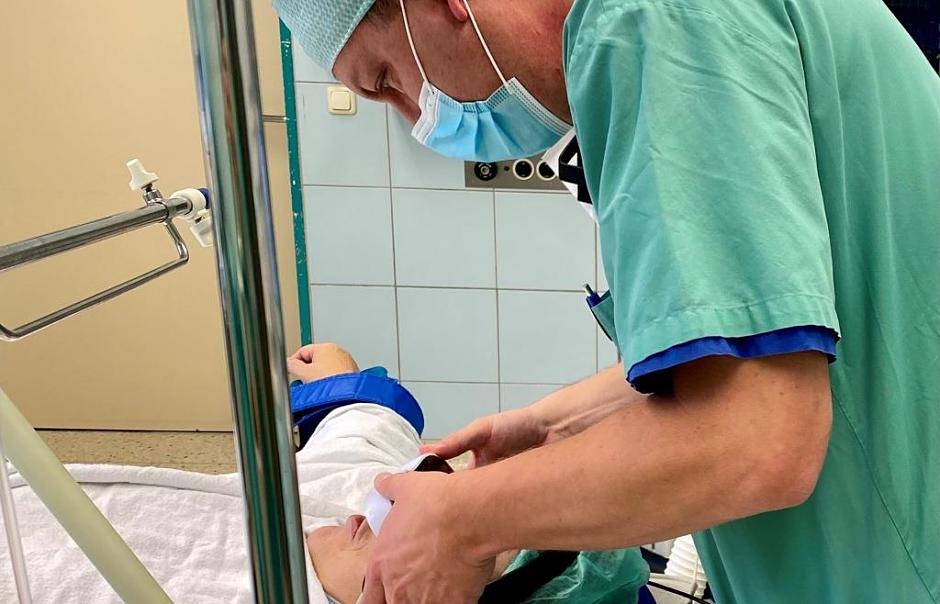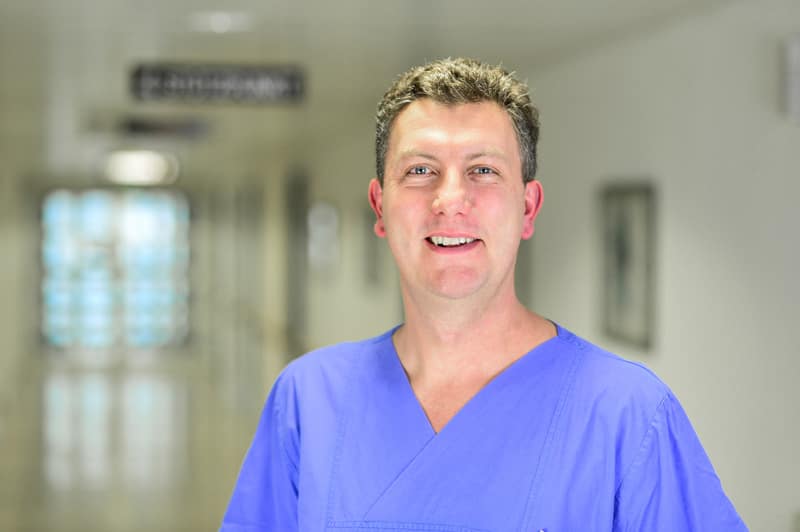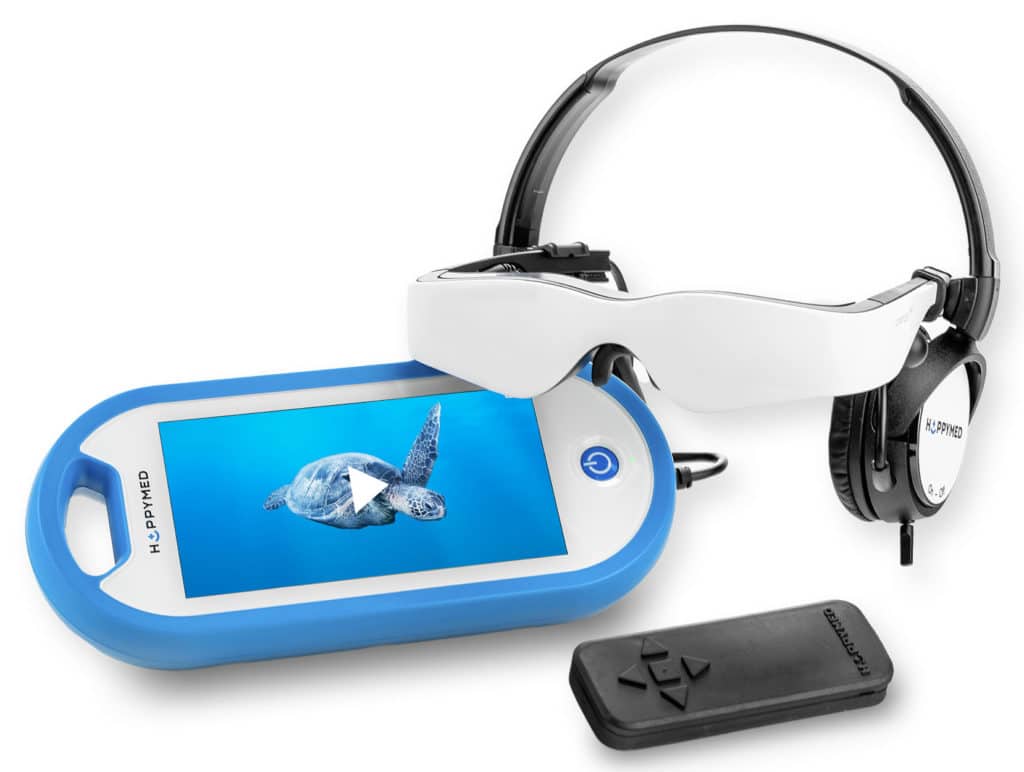
In the anesthesia department in the Schrobenhausen district hospital, the effect of HappyMed video glasses was examined on 88 patients over a period of 5 months.
Dr. Markus Schmola, Head of the Department of Anaesthesiology , Operative Intensive Care and Emergency Medicine, explains: “Many of our patients don’t want to know exactly what happens during the operation. However, once the fear spreads, in the past we had no choice but to give a sedative. But the drugs have one disadvantage: the side effects are not always in proportion to the procedure. Confusion and disorientation can result after waking up. “

That is why the anesthesia department of the district hospital is now using audiovisual sedation with HappyMed video glasses .
The results of the study were summarized in a master’s thesis on the subject of “Introduction and evaluation of video glasses in an anesthesia department of a municipal hospital” by Julia Schmola. The work not only dealt with the effect of audiovisual sedation on patients, but also includes process-oriented topics and the collection of economic factors.
The 5 most important results:
- The patient's subjective level of anxiety could be significantly reduced by using the glasses.
- Over 70% of the patients felt more relaxed when wearing glasses during the procedure. Over 75% of the medical employees found the treatment situation to be more relaxed when the patient was using the glasses. From the medical staffs' point of view, over 85% of the patients have benefited from using the glasses.
- According to the assessment of the treatment team, sedatives could be partially or completely reduced in over 80% of the interventions.
- Due to the hospital structure, the glasses were used in more than 80% of the procedures, especially in older patients (> 50 years). Although the glasses are a high-tech product, it has been shown that even less tech-savvy patients can use the video glasses without any problems.
- The decision to introduce video glasses in the anesthesiology department was beneficial from the staffs' point of view. Staff mentioned a high degree of enrichment of their work and many advantages of the use of the video glasses in the areas of patient comfort and reducing the use of sedatives. Ultimately, everyone said they'd recommend the product to others.
DELETE
DELETE It can be concluded that, despite additional costs due to positive secondary and tertiary effects, the use of HappyMed video glasses is economical THIS SENTENCE MAKES NO SENSE An extrapolation allows the conclusion that the glasses are amortized per 113 uses of the video glasses if the consequence of “delirium” is considered in isolation.
From an economic point of view, however, one shouldn’t neglect the marketing effect of video glasses. For such low expenditure as for the HappyMed video glasses, other marketing measures are hardly feasible. For a more detailed analysis of these effects, the author recommends further studies.
Key data
Study period October 2020 – March 2021, patients n = 88, specialists n = 17
Interventions (n = 88)
- General and visceral surgery (12 procedures)
- Vascular surgery (7 procedures)
- Trauma Surgery and Orthopedics (43 procedures)
- Pediatric orthopedics (2 procedures)
- Urology (24 procedures)
Anesthetic procedure (n = 84)
- 72.6% regional anesthesia
- 4.8% local anesthesia
- 3.6% no anesthesia necessary when wearing glasses
- 19% other anesthesia (e.g. general anesthesia)
Gender and Age (n = 83)
- 57.8% male
- 42.2% female
Age (n = 84)
- Under 5 years: 0%
- 6-11 years: 6%
- 12-17 years: 0%
- 18-29 years: 3.6%
- 30-39 years: 2.4%
- 40-49 years: 9.5%
- 50-59 years: 21.4%
- 60-69 years: 27.4%
- 70 years or older: 29.8%
sources
1) Master’s thesis on “Introduction and evaluation of video glasses in an anesthesia department of a municipal hospital with 150 beds”. Author: Julia Schmola, Burgenland University of Applied Sciences (Austrian Institute of Management).
2) Schrobenhausener Zeitung November 15, 2020: Fear-free in the operating room – video glasses ensure relaxation and the best entertainment during surgical interventions and reduce the use of medication ( https://www.donaukurier.de/lokales/schrobenhausen/Angstfrei-im-OP-Saal ; art603,4714731? fbclid = IwAR2z7pOewo6Bg1jpufXvbH2WLIvLGCtjaSWp2Sb3U0lL1e6ONuttCCLhJWM )
3) Augsbuger Allgemeine November 17, 2020: When to use video glasses at the district hospital in Schrobenhausen ( https://www.augsburger-allgemeine.de/neuburg/Neuburg-Wann-Videobrillen-am-Kreiskrankenhaus-in-Schrobenhausen-zum-Einsatz- come-id58549361.html )
